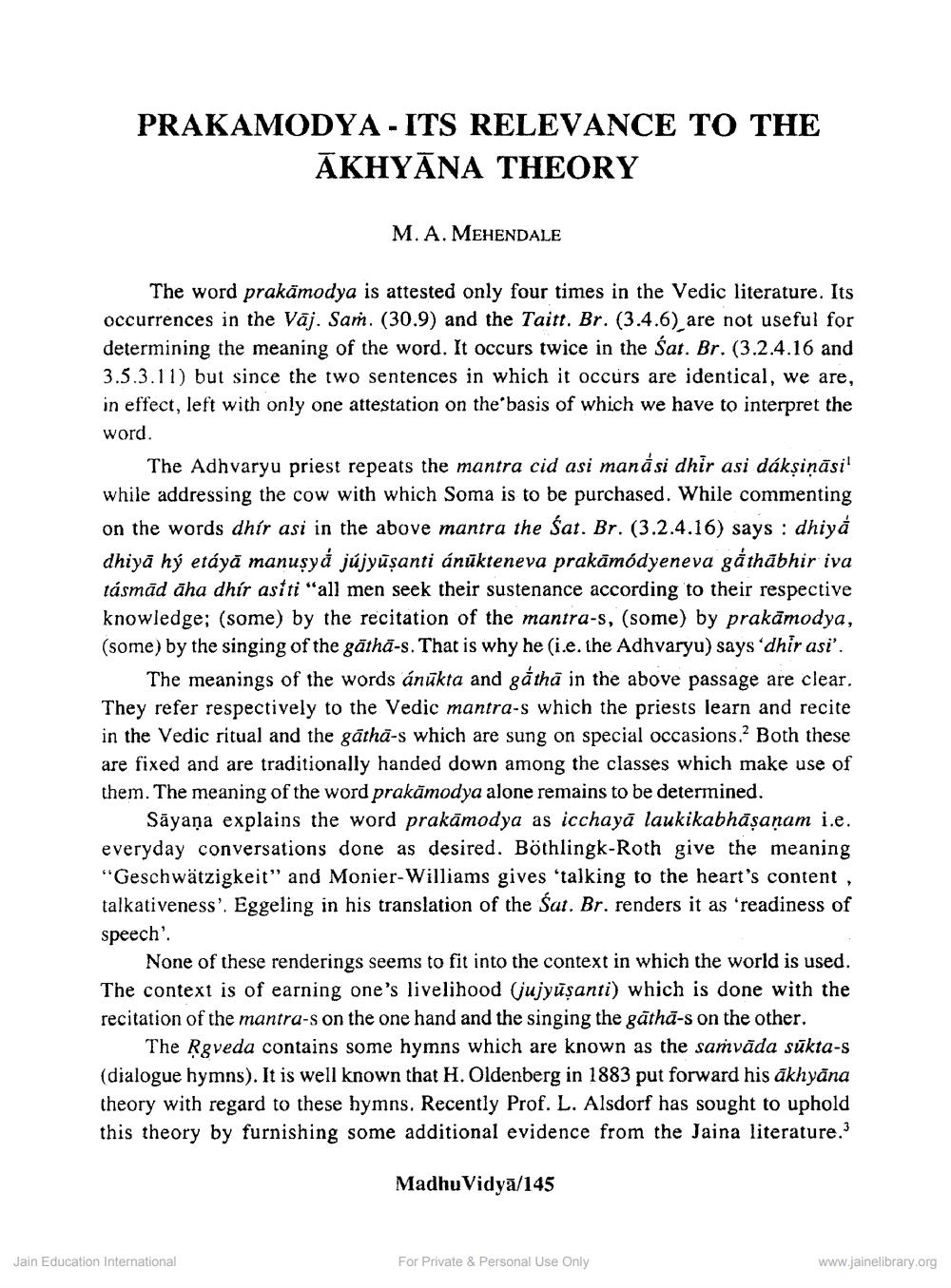________________
PRAKAMODYA - ITS RELEVANCE TO THE AKHYANA THEORY
M. A. MEHENDALE
The word prakamodya is attested only four times in the Vedic literature. Its occurrences in the Vaj. Sam. (30.9) and the Taitt. Br. (3.4.6) are not useful for determining the meaning of the word. It occurs twice in the Sat. Br. (3.2.4.16 and 3.5.3.11) but since the two sentences in which it occurs are identical, we are, in effect, left with only one attestation on the basis of which we have to interpret the word.
The Adhvaryu priest repeats the mantra cid asi manási dhir asi dákṣināsi' while addressing the cow with which Soma is to be purchased. While commenting on the words dhír asi in the above mantra the Sat. Br. (3.2.4.16) says: dhiya dhiya hý etayā manuṣyá jújyüṣanti ánükteneva prakāmódyeneva gåthabhir iva tásmad dha dhír asiti "all men seek their sustenance according to their respective knowledge; (some) by the recitation of the mantra-s, (some) by prakāmodya, (some) by the singing of the gatha-s. That is why he (i.e. the Adhvaryu) says 'dhir asi".
etáyă
The meanings of the words ánukta and gatha in the above passage are clear. They refer respectively to the Vedic mantra-s which the priests learn and recite in the Vedic ritual and the gatha-s which are sung on special occasions. Both these are fixed and are traditionally handed down among the classes which make use of them. The meaning of the word prakāmodya alone remains to be determined.
Sayana explains the word prakāmodya as icchayā laukikabhāṣaṇam i.e. everyday conversations done as desired. Böthlingk-Roth give the meaning "Geschwätzigkeit" and Monier-Williams gives 'talking to the heart's content, talkativeness'. Eggeling in his translation of the Sat. Br. renders it as 'readiness of speech'.
None of these renderings seems to fit into the context in which the world is used. The context is of earning one's livelihood (jujyuşanti) which is done with the recitation of the mantra-s on the one hand and the singing the gatha-s on the other.
The Ṛgveda contains some hymns which are known as the samvada sūkta-s (dialogue hymns). It is well known that H. Oldenberg in 1883 put forward his akhyāna theory with regard to these hymns. Recently Prof. L. Alsdorf has sought to uphold this theory by furnishing some additional evidence from the Jaina literature.3
Madhu Vidya/145
Jain Education International
For Private & Personal Use Only
www.jainelibrary.org




